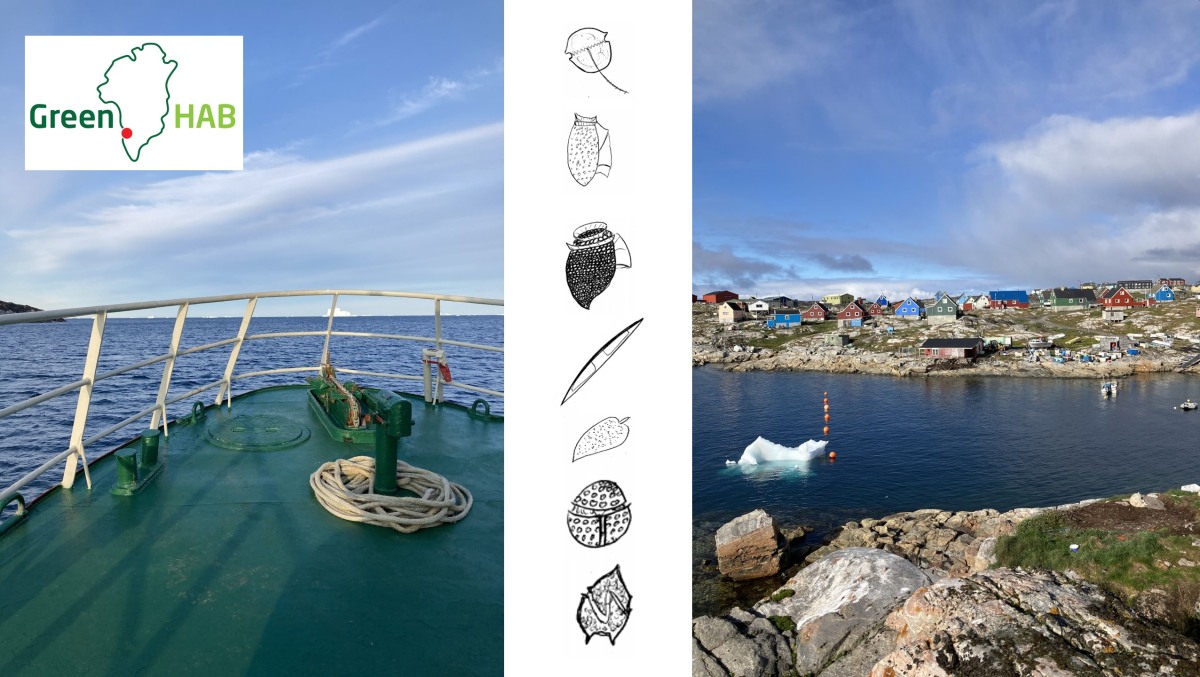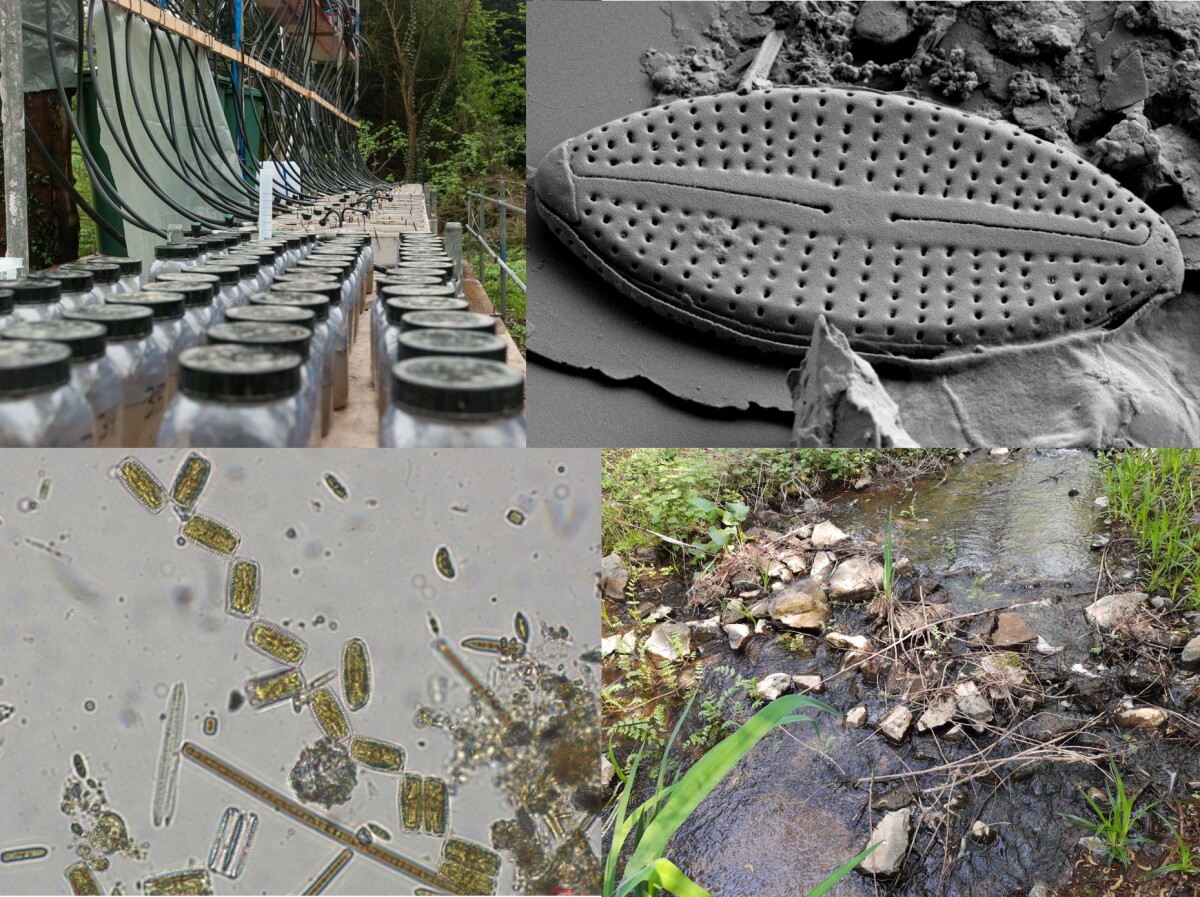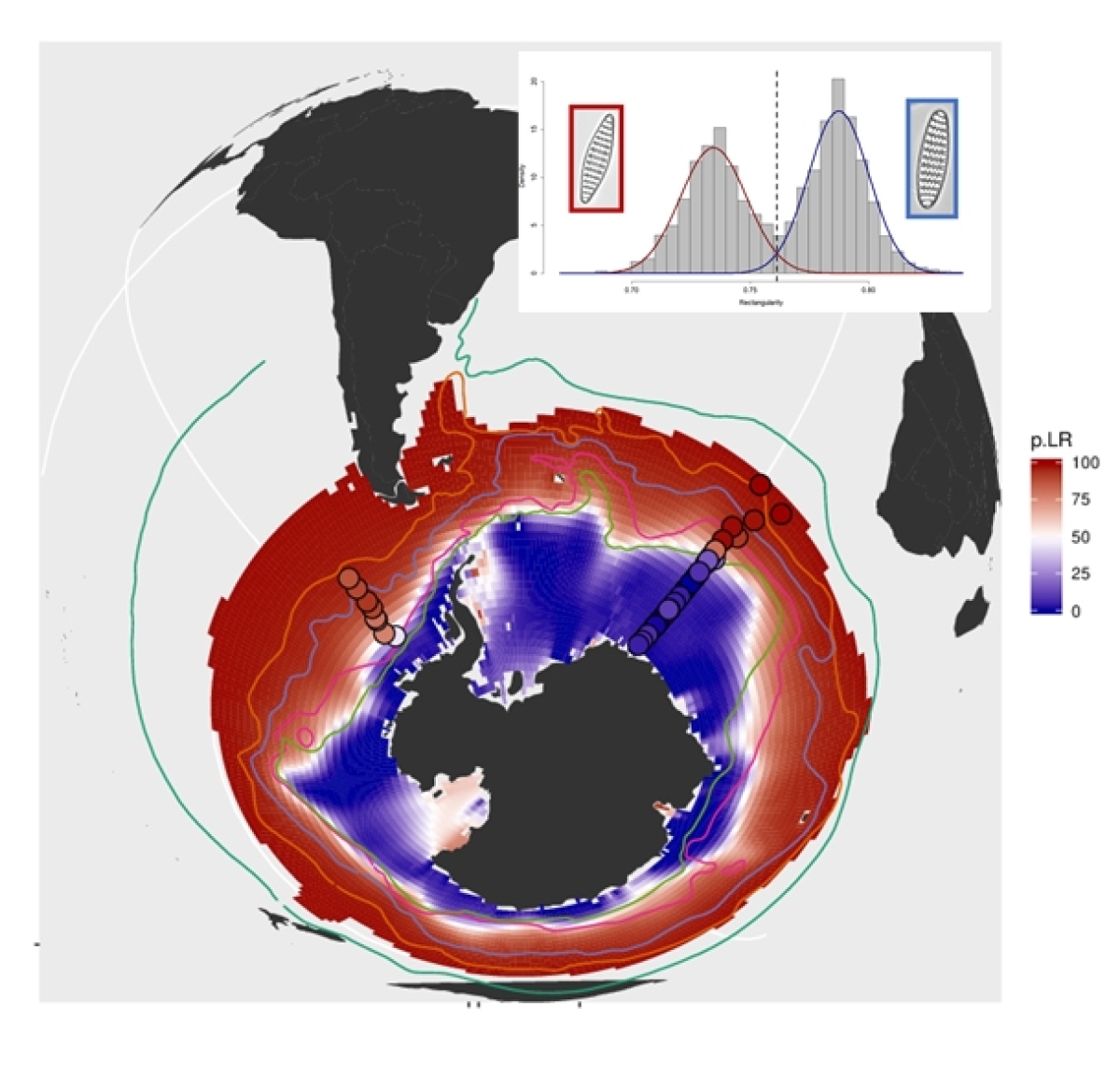Research
GreenHABRisks of climate change driven Harmful Algal Blooms in Greenland waters
In the project GreenHAB, we investigate the occurrence, population dynamics and population connectivity of potentially harmful algal bloom (HAB) forming phytoplankton species along the West coast of Greenland. Due to ocean warming, some phytoplankton species known to form harmful blooms at lower latitudes are also spreading into Arctic-subarctic regions. The GreenHAB consortium investigates the occurrence of such species, and uses a combination of field observations, competition and evolution experiments, and modelling to better understand these phenomena. For more details, see the project web site!
Collaborative Research Centre (CRC) 1439Multilevel response to stressor increase and release in stream ecosystems (RESIST)
Rivers and streams are centres of biodiversity and vital to humans. Human activities impair water bodies and their communities in many ways, and a wide range of measures are in place to reverse these stressors. However, the effects of degradation and recovery are only partially understood, especially when many stressors act simultaneously. RESIST investigates the underlying mechanisms by combining field studies and mesocosm experiments with statistical and mechanistic modelling and synthesis. This broad range of methods is used to investigate the effects of multiple stressors on all components of the stream food web (from viruses to fish) and on four ecosystem functions. The focus of the studies is on the effects of three globally relevant stressors: temperature increase, salinization, and hydromorphological degradation, and the combination of these forms of stress. The goal is to understand and predict the effects of degradation and recovery on stream biodiversity and functions.
In addition to 15 researchers from the UDE, teams from the universities of Bochum, Cologne, Kiel and Koblenz-Landau as well as the Leibniz-Institute of Freshwater Ecology and Inland Fisheries (Berlin) and the Helmholtz-Centre for Environmental Research Halle-Leipzig are involved in the CRC RESIST. Our group analyses microphytobenthos and diatoms in the frame of this CRC.
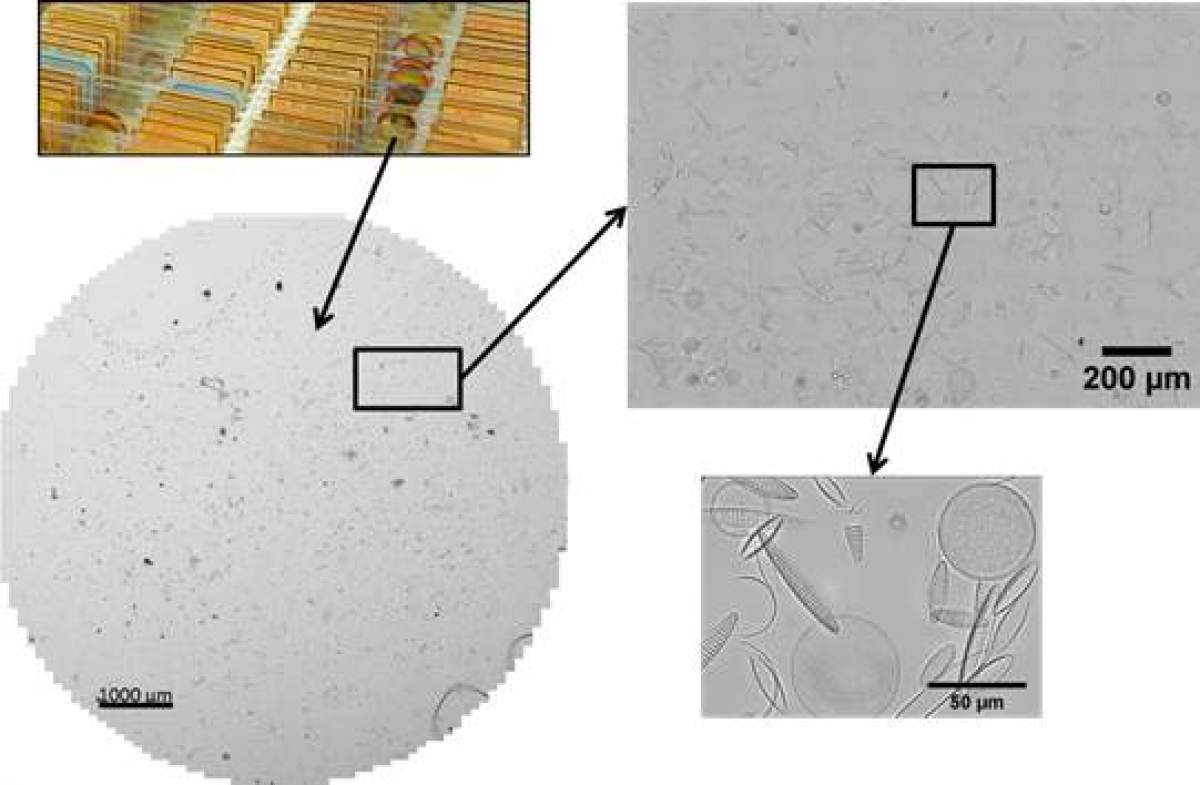
Diatom microscopy in the 21st centuryDigital diatom analyses
So called permanent slides, light microscopic preparations with silcate shells of diatoms embedded into a high refractive index mountant, have long been a basic, but important tool of diatom research. During the last years, we have been developing novel digital methods to bring working with such slides into the 21st century. We have developed a range of methods combining high resolution slide scanning microscopy, "conventional" image analyses with our own custom developed diatom image analysis software "SHERPA", web-based virtual slide annotation, and deep convolutional neural networks for diatom image classification and segmentation. We have used these methods in a number of different research contexts, until now, mainly on frustule material from Southern Ocean sediment, plankton and cultures. Presently, we are also starting applying these methods to freshwater diatom communities.
Further information:
You can find more methodological information, alongside download link for SHERPA, as well as links to papers using the methods, on our software & methods page.
Divergence along environmental gradients: in the Southern Ocean plankton
We have developed an exciting model for investigating local adaptation driven by environmental gradients in the Southern Ocean. We observed population genomic differentiation and local adaptation along latitudinal environmental gradients in the planktonic diatom Fragilariopsis kerguelensis. Interestingly, northern, slightly more warm-adapted strains could be crossed with southern, cold-preferring counterparts in the lab, but they don't seem to produce hybrids in nature. Since they are also not isolated by any extrinsic / geographical / oceanographic boundaries, as of yet, we don't know what kind of reproductive boundary keeps them isolated in the field, but limiting gene flow by whatever mechanism might be important for keeping up locally adapted genotypes from degradation by recombination.
Further information:
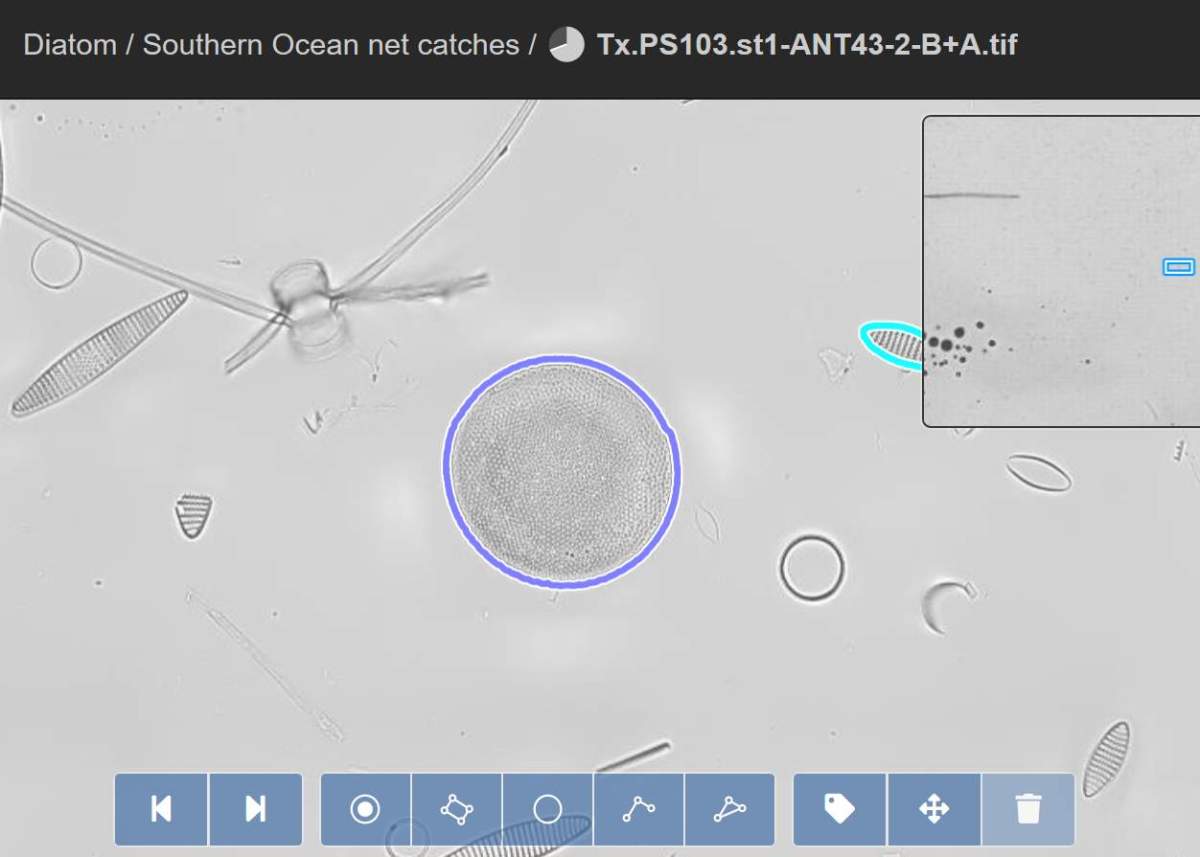
Digital diatom taxonomy
One important motivation for our digital diatom analysis method development activities was that at the time we started this work, we were housed in the Hustedt Diatom Study Centre, one of the largest and best organized diatom herbaria. We were interested in how modern methods could help mobilize that collection at a previously unknown depth, and how presently available hard- and software can be combined in ways that could help diatomists dig into collections of diatom slides and obtain new knowlegde and scientific insights. Virtual slides, i.e., high resolution scans of large areas of a physical slide, can now be shared and annotated on-line, making a new level of insight into collection material possible for distant users; we propose this method to become the new standard for the digitization of diatom collections for the future. Leaving the Hustedt collection, we continue to use and further develop these methods because they can also be helpful for routine diatom analyses, be it for fundamental or applied research. Our Hustedt collection mobilization project "MoBiDic" brought us together with the "Biodata mining" group of Tim Nattkemper, a collaboration which led to our use of Tim's image annotation platform BIIGLE 2.0 for diatom virtual slides (see also here, here and here).
More information:
Repositories for taxonomic data: where we are and what is missing.
A complete digitization of German herbaria is possible, sensible and should be started now.
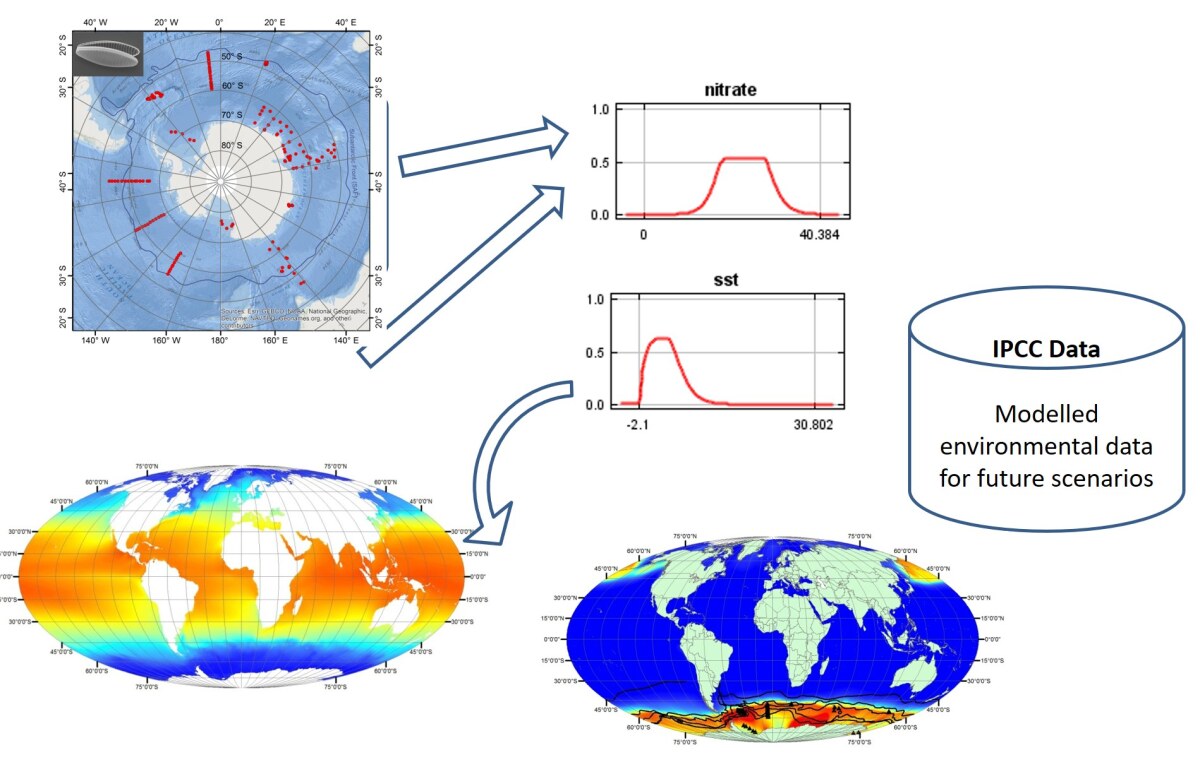
Biogeografic shifts in response to ocean warming
The temperature of the oceans is rising, and this affects its inhabitants. We used biogeographic scenario projections for one of the most common diatoms of the Southern Ocean to learn about whether biogeographic shifts are to be expected even this habitat, up to recently seemingly relatively unaffected by global warming. In the meanwhile, it looks clear that the ecology of the Southern Ocean will also be affected by ocean warming, though in a rather complex manner which we can only partially foresee with any confidence.
More information:
Polares Plankton - Kleinlebewesen im sich ändernden Polarmeer (in German).


